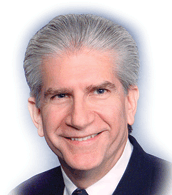

 |
 |
 Steven Immerman , MD |
Gallbladder SurgerySteven Immerman , MD The gallbladder is a small pear shaped sac attached to the underside of the liver. It is in the upper right hand side of the belly underneath the ribs. The gallbladder is a storage area for a digestive fluid called bile. It stores bile between meals, and releases it into the stomach after meals to help with digestion; particularly digestion of fats and oils. Sometimes the relative concentrations of chemicals in the bile become abnormal and stones form. These stones may stay in the gallbladder and not cause any problems. However, often they do cause symptoms of pain, loss of appetite, bloating, heartburn, nausea or vomiting. When these symptoms occur, we recommend removal of the gallbladder along with the stones. If this is not done, the odds are that symptoms will recur or persist, and there is a risk that the stones could cause jaundice or infection. Symptoms from gallbladder disease are so common, and often so vague, that patients may not be aware that they are occurring. In general, any frequent symptoms of indigestion, especially if they are accompanied by pain in the right upper abdomen or pain between the shoulder blades, should be evaluated for the possibility of gallstones. The test for this is usually a simple ultrasound. At the present time, the preferred procedure for removal of the gallbladder is called a Laparoscopic Cholecystectomy. To perform this procedure four small incisions are made on the abdomen. A viewing scope attached to a video monitor is inserted through the belly button incision. The surgeon can see through the scope and maneuver various instruments that are inserted through the other incisions to remove the gallbladder and stones. By performing the procedure laparoscopically, patients experience much less discomfort when compared to the non-laparoscopic approach. This makes recovery much faster, and there are no limits on activity after the procedure. Many times this is done as outpatient surgery on healthy people. After the gallbladder has been removed the bile will drain into the stomach continuously, rather than only after meals. This will not impair digestion. In fact, patients often find that foods that disagreed with them before the surgery will be more acceptable after the gallbladder has been removed. Laparoscopic Cholecystectomy is a very safe procedure. The surgeons at Evergreen Surgical were the first in the Chippewa Valley to offer this procedure, and have been performing them since 1990. For more information or to schedule an appointment with |
|